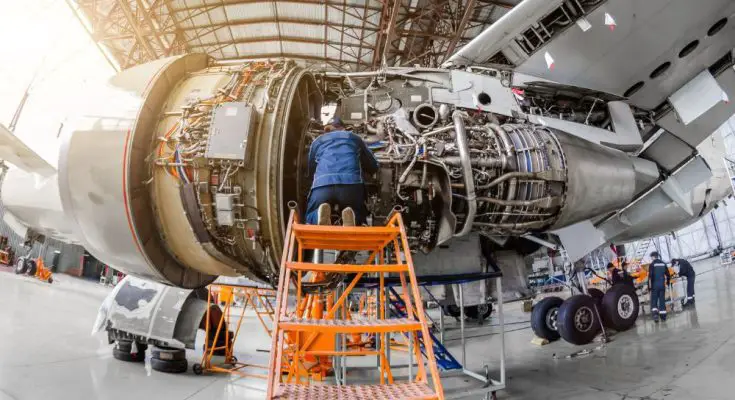There are plenty of focuses that contribute to aircraft maintenance and its effect on a plane’s mechanical health and functionality. Not only do experts inspect and clean planes and their necessary components, but professionals may also assess and repair hardware to mitigate the chance of breakdowns and mechanical failures.
While it sounds like a daunting task for one expert to handle on their own, aircraft maintenance is organized into different focus areas that require specific skills. But what are the different types of aircraft mechanics? Continue reading to learn more about each profession, the training involved, and how these professionals work together to ensure an aircraft’s airworthiness.
Airframe and Powerplant Mechanic
Airframe and Powerplant (A&P) mechanics are typically responsible for conducting routine aircraft maintenance. Also known as aviation maintenance technicians, these experts examine engines, replace or repair defective components, assess structural damage, and control corrosion.
To become an A&P mechanic, individuals must be at least 18 years of age, pass a written examination, and acquire 18 months of experience in airframe or powerplant certification.
Inspection Authorization Mechanic
Inspection Authorization (IA) mechanics are Airframe and Powerplant (A&P) professionals that conduct routine aircraft inspections and a variety of alterations and maintenance. In addition to conducting standard inspections, IAs can sign an aircraft back into service after undergoing significant repairs.
IAs undergo extensive training that provides them with the knowledge and expertise to conduct procedures and sign off on paperwork. After obtaining their certification as an A&P, a prospective IA trains for three additional years and completes two years of active practice to meet requirements.
Maintenance, Repair, and Overhaul
For aircraft in need of repairs on complex components and mechanisms, like landing gear assemblies and turbine engines, it’s best to contact a Maintenance, Repair, and Overhaul Station (MRO). This repair station offers premium services from certified technicians and mechanics with specialized equipment that can handle extensive repairs.
To obtain certification, these experts must complete a five-stage application process that includes pre-application, formal application, documentation, inspection, and certification.
Given the importance of regular aircraft maintenance, ensuring that machinery operates as intended is paramount to safety. While all professions specialize in separate areas of aircraft maintenance, the different types of aircraft mechanics and their skills all strive to ensure complete mechanical health.



